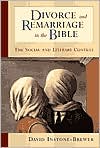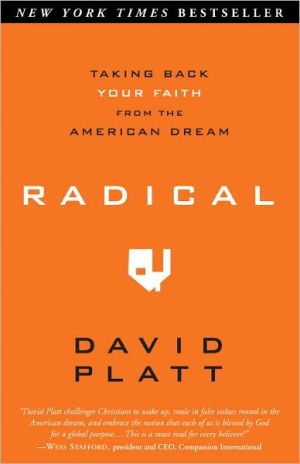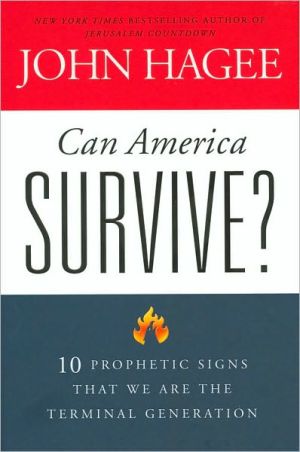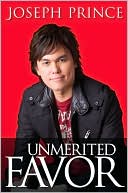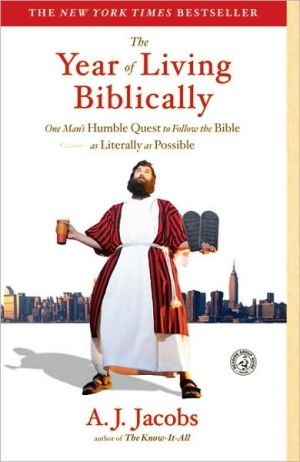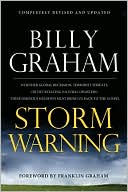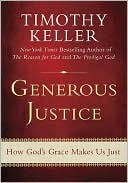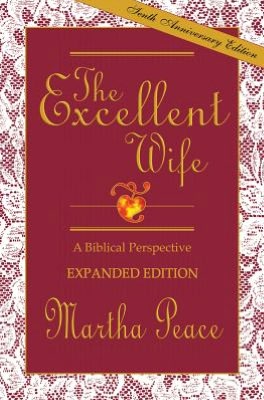Divorce and Remarriage in the Bible: The Social and Literary Context
To many, the New Testament's teaching on divorce and remarriage seems to be both impractical and unfair. The "plain" meaning of the texts allows for divorce only in cases of adultery or desertion, and it does not permit remarriage until the death of one's former spouse. But are these proscriptions the final word for Christians today? Are we correctly reading the scriptures that address these issues?\ By looking closely at the biblical texts on divorce and remarriage in light of the...
Search in google:
To many, the New Testament's teaching on divorce and remarriage seems to be both impractical and unfair. The "plain" meaning of the texts allows for divorce only in cases of adultery or desertion, and it does not permit remarriage until the death of one's former spouse. But are these proscriptions the final word for Christians today? Are we correctly reading the scriptures that address these issues? By looking closely at the biblical texts on divorce and remarriage in light of the first-century Jewish and Greco-Roman world, this book shows that the original audience of the New Testament heard these teachings differently. Through a careful exploration of the background literature of the Old Testament, the ancient Near East, and especially ancient Judaism, David Instone-Brewer constructs a biblical view of divorce and remarriage that is wider in scope than present-day readings. Among the important findings of the book are that both Jesus and Paul condemned divorce without valid grounds and discouraged divorce even for valid grounds; that both Jesus and Paul affirmed the Old Testament grounds for divorce; that the Old Testament allowed divorce for adultery and for neglect or abuse; and that both Jesus and Paul condemned remarriage after an invalid divorce but not after a valid divorce. Instone-Brewer shows that these principles are not only different from the traditional church interpretation of the New Testament but also directly relevant to modern relationships. Enhanced with pastoral advice on how to apply the biblical teaching in today's context, this volume will be a valuable resource for anyone seeking serious answers about married life.
Divorce and Remarriage in the Bible\ The Social and Literary Context \ \ By David Instone-Brewer \ Wm. B. Eerdmans Publishing Company\ Copyright © 2002 Wm. B. Eerdmans Publishing Company\ All right reserved.\ ISBN: 0-8028-4943-1 \ \ \ \ Chapter One\ Pastoral Conclusions\ Reversing Institutionalized Misunderstandings\ An overview of this book reveals that the emphasis of the NT is against divorce unless it is truly necessary. Jesus and Paul teach against the no-fault divorce procedures of Jewish and Greco-Roman societies, respectively. Christians should never cause a divorce by breaking marriage vows and are encouraged to forgive their partners as long as they repent. These conclusions depend on reading the NT text through the eyes of a first-century believer. The modern church minister should concentrate on keeping marriages together but also should support those who have gone through the pain of divorce, enabling them to remarry after finding forgiveness.\ An Overview\ In this book I have attempted to read the Scriptures through the eyes of the original recipients of the text. I have attempted to contrast the teaching of Scripture with the cultural norm of the society to which the different texts were written. This provides an important clue about the emphasis of the text and the reason why it was originally written.\ In the first two chapters I looked at the ancient Near Eastern background to the Mosaic material. Although thePentateuch was probably edited at several stages over a period of many hundreds of years, much of the material shows itself to be very ancient. The teaching on divorce and remarriage shows literary and cultural links with ancient Near Eastern texts dating back to 1400 B.C.E., though a similar culture was prevalent for several centuries later. In this culture it was almost impossible for women to remarry even if they had been abandoned for many months or even several years. The former husband could always return and reclaim his wife and children from her new husband. This meant that the new husband could end up paying for the upbringing of children without benefiting from them when they were old enough to work. The Mosaic law decreed that the husband had to give a wife a divorce certificate if he ceased to care for her. This released her from the former marriage and enabled her to remarry. The Mosaic law also defined the ways in which a husband had to care for his wife. He had to supply her with food, clothing, and love, and none of these must diminish even if he marries a second wife.\ In chapter three we saw that the Prophets and Writings of the OT speak about marriage as a contract. This was the same way that all ancient Near Eastern cultures regarded marriage, as I pointed out in chapter one. The Mosaic model defined the terms of the contract (i.e., to supply food, clothing, and love, and be faithful) and defined the way to end the contract (i.e., write a certificate of divorce). Several prophets pictured Israel as married to God and divorced by him for breach of the marriage contract. They regarded God as the innocent partner who reluctantly made the decision to divorce his wife. Most of the prophets point out that Israel had been unfaithful to God, while Ezekiel adds that she also refused to return his love and refused to prepare meals and clothes for him from the food and cloth that he supplied. The Prophets regarded the terms of the marriage contract as grounds for divorce, and they regarded them as incumbent on the wife as well as on the husband. Malachi contains the most severe criticism of divorce in Scripture, expressing the hurt of God's first-hand experience: "I hate divorce" (Mal. 2:16). Divorce is defined in this Malachi passage as the breaking of marriage covenant vows: "dealing treacherously against your companion, your covenant wife" (Mal. 2:14).\ Chapters four and five detailed the huge cultural changes that took place between the OT and NT, particularly in the development of a rabbinic theology of divorce. The rabbis continued to regard marriage as a contract, and they continued to recognize OT terms of this contract: faithfulness, food, clothing, and love. They classified the latter three in the two categories of material support and emotional support, and they regarded abuse as a negation of such support.\ There was an increasing tendency in rabbinic teaching to ignore the binding nature of the marriage contract. In general contract law, a contract could be declared void only if one party failed to keep one's side of the contract and the other party decided that the contract should be ended as a result. In the rabbinic development of divorce law, only the man could decide to end the marriage contract (irrespective of who had broken the contract). This was based on the fact that the man wrote the divorce certificate. However, a wife could also force a husband to divorce her if she could prove to a rabbinic court that he had broken the marriage contract.\ Some rabbinic courts also allowed huge leniency to men who claimed that their wife had broken the marriage contract. The Hillelites said that they could literally cite "any matter." The ground "any matter" was based on their own interpretation of the phrase "matter of nakedness" in Deuteronomy 24:1 as "any matter, or indecency." There was no need to prove this ground in court, and so divorce became a very simple procedure. These groundless divorces based on "any matter" became the basis of almost all divorces, except where adultery could be proved.\ Jesus' response to these rabbinic developments was detailed in chapter six. He was asked if he accepted the Hillelite groundless divorce based on "any matter." He replied that such divorces were completely invalid and that any remarriage after such a divorce was equivalent to adultery. The true interpretation of the phrase in Deuteronomy 24:1 was "a matter of indecency," as the Shammaites said. The Shammaites understood the phrase to mean "adultery," and presumably Jesus did also. Jesus probably also allowed divorce on other biblical grounds, namely, neglect of food, clothing, and love, as the Shammaites and all other Jews did. The main emphasis of Jesus' teaching, when he was asked about the ground of "any matter," was that divorce should not happen. Neither partner should break up the marriage by breaking the marriage vows. Even if someone is unfaithful, the law does not command a divorce; it only allows one. Furthermore, it should take place only if the person is "hard-hearted" (i.e., stubbornly refusing to repent, like Israel when God divorced her).\ The world of Paul, described in chapter seven, was completely different. In the Greco-Roman world anyone could divorce simply by separating from one's spouse. Paul forbade Christians from using this divorce by separation. He based this on the teaching of Jesus, presumably because divorce by separation was another example of a groundless divorce. Like Jesus, he emphasized ways to remain married rather than ways to divorce. He reminded the Corinthians of their marriage contracts, which said that they should provide emotional support (including physical love, where appropriate) and material support (food and clothing). If a believer was divorced against his or her will, and there was no means of reconciling the marriage, Paul allowed the person to regard it as a valid divorce and to remarry. Perhaps this was because divorce by separation is equivalent to both physical neglect and emotional neglect, but Paul said that he was simply following the rule of pragmatism.\ The marriage vows in Judaism and Christianity were dealt with in chapter eight. They can both be traced back to the terms of the OT marriage contract. The Christian wording of "cherish, honor, and love" can be traced back to Exodus 21:10-11 via Ephesians 5:29, which can be translated literally as "feed," "keep warm," and "love." These, together with the vow to be "faithful," are the four obligations of an OT marriage contract. The Christian marriage service can therefore be regarded as a version of the biblical marriage contract. The rule that a Church leader should be "a man of one woman" or "a woman of one man" refers to the vow of sexual faithfulness, and not to compulsory marriage, or to divorce and remarriage.\ Chapter nine traced the history of interpretation of these difficult texts. The knowledge of the Jewish background of the divorce debate was lost to the Church from a very early date. Even within Judaism, the debate in which Jesus participated became no more than a historical curiosity after 70 C.E. when virtually all non-Hillelite teaching was lost. The question about divorces on the basis of the "any matter" interpretation was understood as a question about "any divorce." Interpreters could not see the invisible quotation marks around the phrases "any matter" and "a matter of indecency." So, when Jesus condemned divorces for "any matter," he appeared to condemn all divorces. When he affirmed the interpretation "a matter of indecency," he appeared to make an exception just for adultery. The only logical way to understand this condemnation of divorce was to conclude that marriage was an indissoluble sacrament, like entering the priesthood. Therefore remarriage was not allowed until God performed a separation through the death of one of the partners.\ The modern struggle with these texts is outlined in chapter ten. The pastoral problems of physical and emotional abuse forced many exegetes to look for biblical means of divorce in these cases. The Catholic Church found it in annulment, and many Protestant churches found it by ingenious interpretations of the biblical text. A few sections of the Church decided to maintain the position that Jesus appeared to state that there should be no divorce whatsoever.\ How Should We Read Scripture?\ My personal view is, of course, that the position adopted in this book has a stronger historical and exegetical basis than others, but I recognize that this depends on the way one reads the text. My view is the result of reading the text in a culturally sensitive way, through the eyes of a Christian living at the time that the texts were written. The traditional view is based on reading the text through the eyes of someone in the second century or beyond, when specific details of first-century culture had been forgotten. The approach adopted in this book, of reading Scripture in the context of its culture, is based on the three principles of hermeneutics that were discussed in chapter ten:\ 1. Scripture should be read through the filters of the language and culture to which it was first addressed.\ 2. The morals and laws of Scripture should be compared with those of the cultures it was written for.\ 3. The primary meaning of Scripture is the plain sense, as it would be understood by an ordinary person in the culture for which it was written.\ A Jewish Christian before 70 C.E. would assume that divorce and remarriage was allowed for all four biblical grounds because these grounds were accepted by all branches of Judaism. He would recognize that Jesus forbade the use of the new Hillelite ground of "any matter," and that Jesus also criticized polygamy and compulsory divorce for adultery. He would assume that Jesus allowed divorce on biblical grounds because Jesus did not criticize them and Jesus affirmed other aspects of OT moral law. Both a Jewish and a Greco-Roman Christian would assume that Paul allowed remarriage when he said that someone who was divorced against one's will was "no longer bound."\ Other views have a stronger basis than mine if the NT is read through the eyes of Church tradition or through the eyes of a modern reader. The traditional Church interpretation is almost uniformly that of indissoluble marriage, with separation allowed only on the grounds of adultery. This is based on a "plain" reading of the text without any pre-70 C.E. insight into the Jewish background of the Gospel passages. The modern reader is likely to come to the same conclusion about the "plain" meaning of the text.\ The deciding factor might be our view of inspiration. Did the Holy Spirit inspire the writers of the NT to communicate primarily to the original recipients of the texts, or did he also make sure that future generations would be able to understand it? On the one hand, it might be argued that the Holy Spirit would not have allowed the Church to be confused about such an important matter for so many centuries just because the scholars had not yet rediscovered the cultural context in NT times. On the other hand, the Bible is not dictated, as the Quran is claimed to be. Inspiration is mediated through real people and real history, and so we have to read the Bible through the eyes of the original recipients as much as possible.\ It is generally accepted that we need some knowledge of ancient culture in order to understand certain texts. It is impossible to understand many of Jesus' criticisms of the Pharisees in Matthew 23 without knowing about their rules on vows, tithing, and cleanliness. These rules remained common knowledge well beyond the first century, and thus the Church had little difficulty in understanding these texts. Some commands, such as those about head coverings and making images of animals, are generally regarded as culturally determined. Few churches exclude women without hats or ban depictions of animals within their walls. The cultural background to these rules has been common knowledge, though covering the head remained compulsory in churches for a long time.\ The Church has also been beset by theological problems and misunderstandings that are more serious than the matter of divorce and remarriage. Some problems have divided the Church or caused mass excommunications, or even mass executions. The doctrines of the Trinity, the Mass, and apostolic succession have caused much pain in the past, and today the Church has new divisions based on the gifts of the Holy Spirit, women in leadership, and the nature of scriptural inspiration. If one argues that the Holy Spirit would not have allowed the Church to be confused about the doctrine of divorce and remarriage, one would surely expect Scripture to be less ambiguous about these other subjects as well.\ Actually, much of the Jewish background to the divorce debate has been well understood by scholars for many decades. It was one of the important discoveries after the revival of Jewish studies in the mid-1800s. After about 1850 all good commentaries mentioned the Hillelite-Shammaite debate as an explanation of the Gospel material. The only significant new factor that has not been properly noted before was the acceptance of the other three biblical grounds for divorce by all Jews, including the Shammaites. Once the debate behind the Gospel account is recognized, it becomes clear that Jesus is giving his opinion about the Hillelite interpretation "any matter," and so he is not condemning "every divorce." Although this is obvious, very few scholars have either recognized it or written about it clearly because the traditional teaching about indissoluble marriage was so firmly entrenched in Christian theology.\ Even before the rediscovery of this Jewish background by the Christian Church, the knowledge was never far away. Most Christian communities contained Jews and Jewish scholars, any of whom could have pointed out this parallel. Perhaps the Church has suffered from its own anti-Semitism, which stopped it from learning from Jewish scholars until relatively recently.\ The Holy Spirit can perhaps be seen at work in preserving the biblical marriage vows in the Christian wedding service. The same OT vows of faithfulness, food, clothing, and love have come into our wedding services via Ephesians 5:29. This means that, when Christians marry, they make the same promises that were made by Jews in the OT and NT, promises which became the basis of a divorce if they were broken.\ Modern Church Practice\ The established churches have attempted to remain faithful to the traditional interpretations. For the Catholic Church this means that marriage is a sacrament and therefore indissoluble. Even the Anglican Church, which separated from Rome because of the issue of divorce, has a fundamentally identical view. Only the Orthodox Church has allowed divorce and remarriage on a wide variety of grounds from an early date, especially on the grounds of unfaithfulness and abandonment. Although Orthodox theology regards marriage as lifelong, it also recognizes the power of the Church to end marriages that it considers to have died.\ In recent years, the Catholic Church has made the process of annulment much easier. Impediments include the making of vows when one is too young or immature to understand the consequences, or making vows under duress or fear. Vows can even be declared invalid if one partner did not give due deliberation to the matter, or later claimed to have only pretended to give consent. This wide flexibility can amount virtually to divorce on demand.\ (Continues...)\ \ \ \ \ Excerpted from Divorce and Remarriage in the Bible by David Instone-Brewer Copyright © 2002 by Wm. B. Eerdmans Publishing Company . Excerpted by permission.\ All rights reserved. No part of this excerpt may be reproduced or reprinted without permission in writing from the publisher.\ Excerpts are provided by Dial-A-Book Inc. solely for the personal use of visitors to this web site. \ \
PrefaceIntroduction1The Ancient Near East: Marriage Is a Contract12The Pentateuch: The Divorce Certificate Allows Remarriage203The Later Prophets: Breaking Marriage Vows Is Condemned344Intertestamental Period: Increasing Rights for Women595Rabbinic Teaching: Increasing Grounds for Divorce856Jesus' Teaching: Divorce on Biblical Grounds Only1337Paul's Teaching: Biblical Grounds Include Neglect1898Marriage Vows: Vows Inherited from the Bible and Judaism2139History of Divorce: Interpretations in Church History23810Modern Reinterpretations: Different Ways to Understand the Biblical Text26811Pastoral Conclusions: Reversing Institutionalized Misunderstandings300Bibliography315Index of Modern Authors334Index of Subjects338Index of Scripture and Other Ancient Texts348
